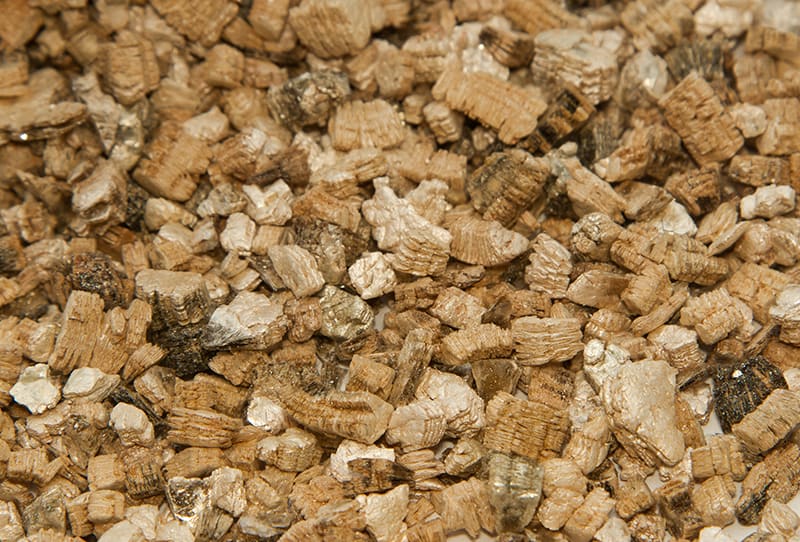What is Vermiculite?

So, what is vermiculite? Described as a group of hydrated laminar minerals, it is a naturally occurring mineral in the form of shiny flakes, resembling mica with golden brown to blackish color. Vermiculite can expand when heated to high temperature and the expanded vermiculite becomes lightweight, fire-resistant, and odorless. So, with its unique properties, this material is suitable for use as insulation.
Hidden Dangers of Vermiculite
On its own, vermiculite is not dangerous, and there is no evidence showing that it can cause acute or chronic health issue from exposure to vermiculite. However, from 1919 to 1990, the Libby mine in Montana may have produced 70 percent of the vermiculite sold in United States and Canada and there was also a deposit of asbestos at that time. Therefore, the vermiculite from Libby was contaminated with asbestos, and it has been widely used as a soil conditioner and in building insulation, especially in attics in residential buildings and concrete cinderblock or walls/ceiling cavities. Most vermiculite insulation contains asbestos, which can cause problems if inhaled.
The actual percentage of asbestos in bulk vermiculite is very low (typically <1% or trace asbestos), but these fibres can be disturbed and become airborne, the chance to inhale these fibres is increased. There are health concerns for asbestos fibres, with prolonged exposures increasing the chance of lung scarring, and even the development of lung disease, lung cancer or mesothelioma. These diseases can lead to reduced respiratory function and death.
Legislated Requirements for Removing Asbestos-Contained Vermiculite in Alberta
In Alberta, as stated in Alberta Asbestos Abatement Manual, “Asbestos in buildings”, even vermiculite insulations contain very low levels of asbestos, and significant amounts of asbestos fibres can be released. The manual states that “In existing buildings where there is potential for the release of asbestos fibres, the material must be removed, enclosed, or encapsulated. In buildings or parts of buildings that are being demolished, materials having the potential for releasing asbestos fibres must first be removed”.
If you have vermiculite insulation in your home and your house was built during that period, you should assume this material contains asbestos and further steps are needed for you to protect yourself and your family from exposure to asbestos.
However, not all vermiculite contains asbestos, but when it is found in buildings it should always be tested by a professional first.
Questions? Reach Out to us for Answers!
3 Comments
Leave a Reply Cancel reply
How Can We Help You?
Contact us at JADA Solutions (HSE) Inc. to speak with one of our professionals!
Newsletter
📹 Watch our latest Safety Toolbox Talk: Mould and Fungi 101: Viable vs. Non-Viable Mould Testing
💡Are all moulds considered fungi? And why should we care? This leads us to explaining the two different types of testing for mould exposure: viable vs non-viable.
🔍 Lead and Heavy Metal Exposure: Are You Protecting Your Workers?
Lead and other heavy metals can quietly put your team at serious risk - especially during construction, demolition, or manufacturing projects.
Our last Asbestos Worker in Alberta 2-Day Training Course before the Summer season happens at the end of this month!
🗓️ June 24th - 25th
⏰ 8AM - 5PM
💵 $525
📍 Sherwood Park, AB
Claim your spot now! 👉



[…] Vermiculite and Alberta […]
[…] Vermiculite and Alberta […]
[…] Vermiculite and Alberta […]